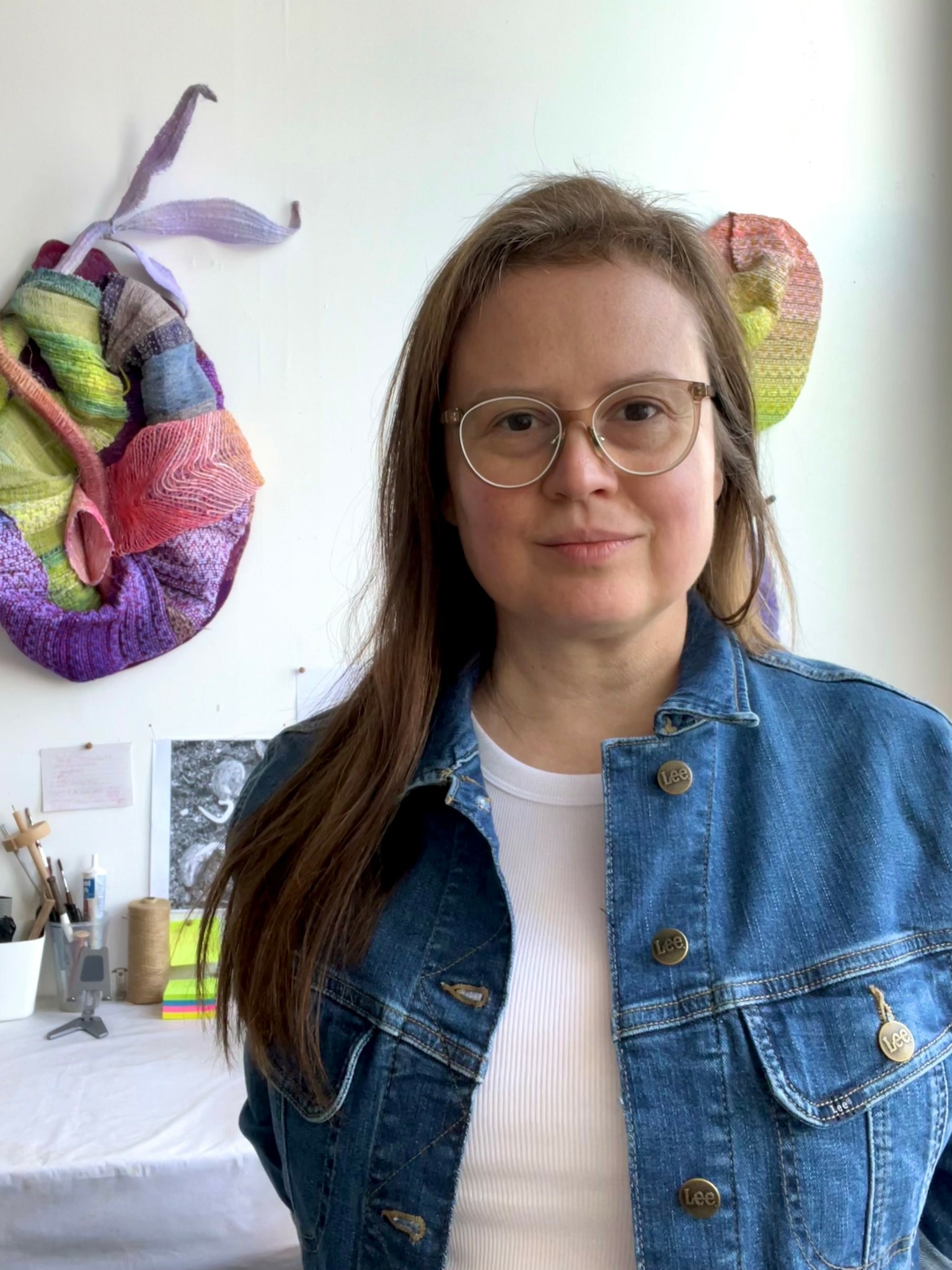We’re excited to introduce you to the always interesting and insightful Kathie Halfin. We hope you’ll enjoy our conversation with Kathie below.
Kathie , thanks for joining us, excited to have you contributing your stories and insights. How did you learn to do what you do? Knowing what you know now, what could you have done to speed up your learning process? What skills do you think were most essential? What obstacles stood in the way of learning more?
Learning, for me, is a lifelong process—and art is no exception. My practice in weaving has taught me patience and the value of time. Weaving is inherently slow, and I love that quality. I’m not seeking to make my projects faster, but I do enjoy finding new ways of working that open possibilities. For example, experimenting with the double-weave technique led me to create long woven pipes, which, over time, I learned to make more efficiently. This approach has become the foundation of my installation work.
I incorporate both traditional loom weaving and more experimental tapestry techniques, combining them with woodworking skills to expand my methods for creating two- and three-dimensional forms. I believe in organic growth—slow but consistent learning—and the joy that comes from the process itself.

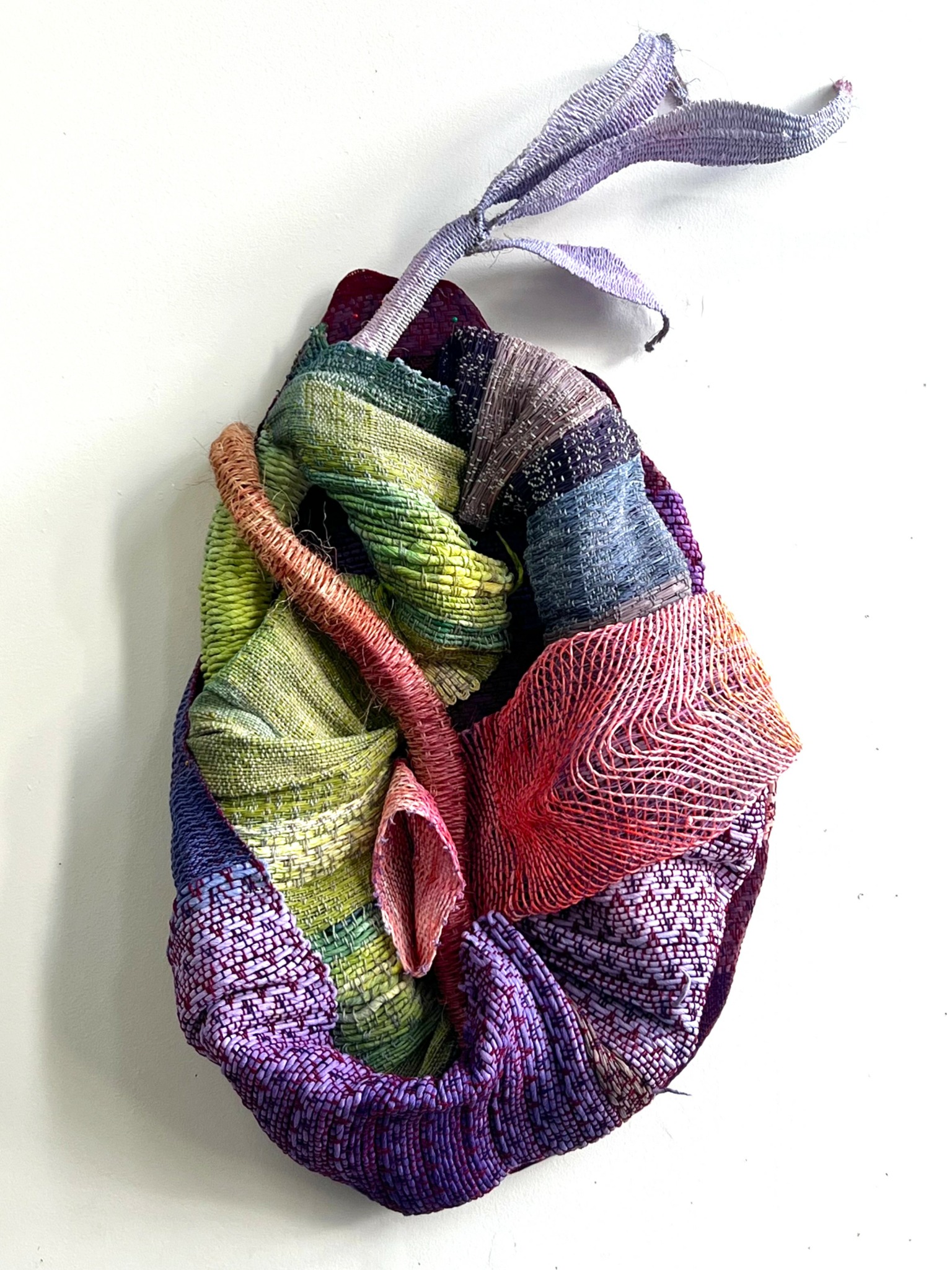
Kathie , love having you share your insights with us. Before we ask you more questions, maybe you can take a moment to introduce yourself to our readers who might have missed our earlier conversations?
I am a New York–based interdisciplinary artist working in fiber, sculpture, and installation. Rooted in the traditions of weaving yet guided by experimentation, my woven sculptures honor this ancient practice as a language of care, resistance, and embodied knowledge.
Weaving came into my life through both formal education and lived experience. I was first introduced to the loom as a design student, but the practice truly deepened when I began to approach it not just as a technique, but as a form of embodied storytelling—one that speaks through tactility, color, and touch.
I’m an artist who loves creating from the ground up. I often invent my own tools, building simple looms that allow me to experiment with form and structure. I also spin my own paper yarn—the primary material I use for weaving—which opens an endless field of possibilities. This hands-on process enables me to bridge traditional weaving patterns with an experimental, playful approach to making, merging past and present in ways that feel both grounded and surprising.
I often work with industrial paper, transforming it through a slow and meditative process of hand-spinning and dyeing into yarn that I weave into sculptural forms. This process of unmaking and renewal mirrors the quiet growth of plants. I am inspired by how plants sense, adapt, and connect—qualities I translate into the shifting tensions, textures, and colors of my woven works. The resulting pieces often evoke states of blooming, rooting, or reaching, reclaiming the manufactured as something sensitive and alive.
I create both large-scale installations and smaller woven sculptures, as well as multisensory performances that bring together tactile surfaces, scent, sound, and natural elements. These works open spaces for communication between humans and the more-than-human world, inviting viewers to slow down, touch, and listen differently.
What sets my work apart is the development of new materials—like hand-spun paper yarn that I paint, utilizing various techniques that I developed. I explore their structural and sculptural possibilities. I’m drawn to holding contradictions: strength and softness, tradition and experimentation, the visible and the invisible. My pieces often appear otherworldly, yet they remain grounded in the physical world through the tactile presence of their materials. I strive to create works that feel vivid and alive—as if they carry a pulse or a breath of their own.
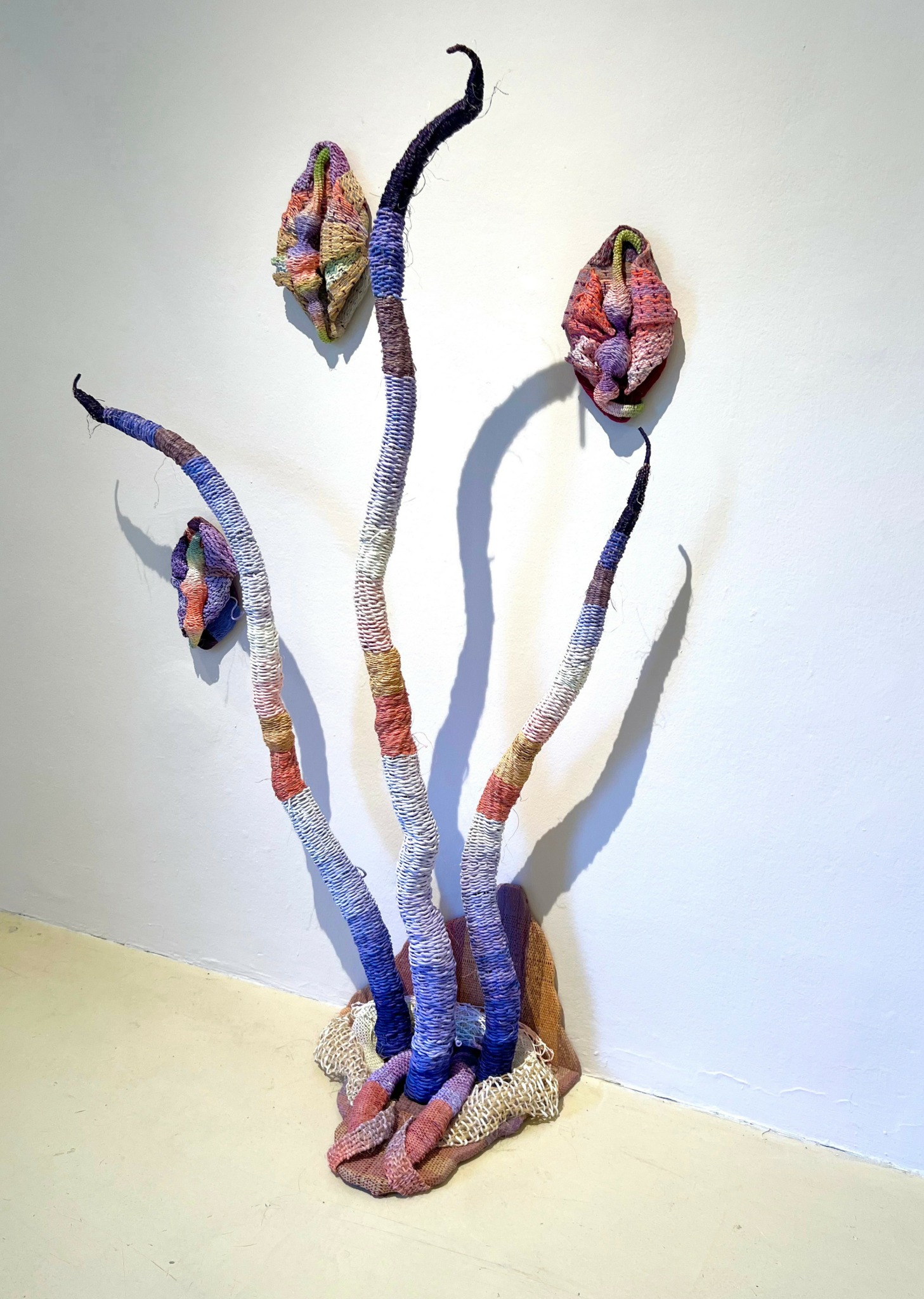

Can you share a story from your journey that illustrates your resilience?
After the collapse of the Soviet Union, my family lost nearly everything—work,
economic stability, and a sense of security that followed our immigration. During our
time living in Ukraine, we had a small garden. My family tended to plants and trees
through seasons of uncertainty and transition. We cultivated fruits and vegetables to
support us through the harsh economic situation. As a child, this labor felt
burdensome, but something essential took root within me during those years. I learned
to care for plants, to observe their cycles of growth, to gather their fruits, and to
witness their aliveness through seasons.
Today, my life as an artist and immigrant remains deeply shaped by that formative
intimacy with plants. I continue to cultivate a garden, attentive to its gestures and
transformation, and I integrate these experiences into hand-woven paper sculptures.
Grounded in sensory engagement, weaving becomes a channel to life-affirming familial
memory—transforming the losses of migration and systemic collapse into new forms of
resilience that reconnect us with nature and ourselves.
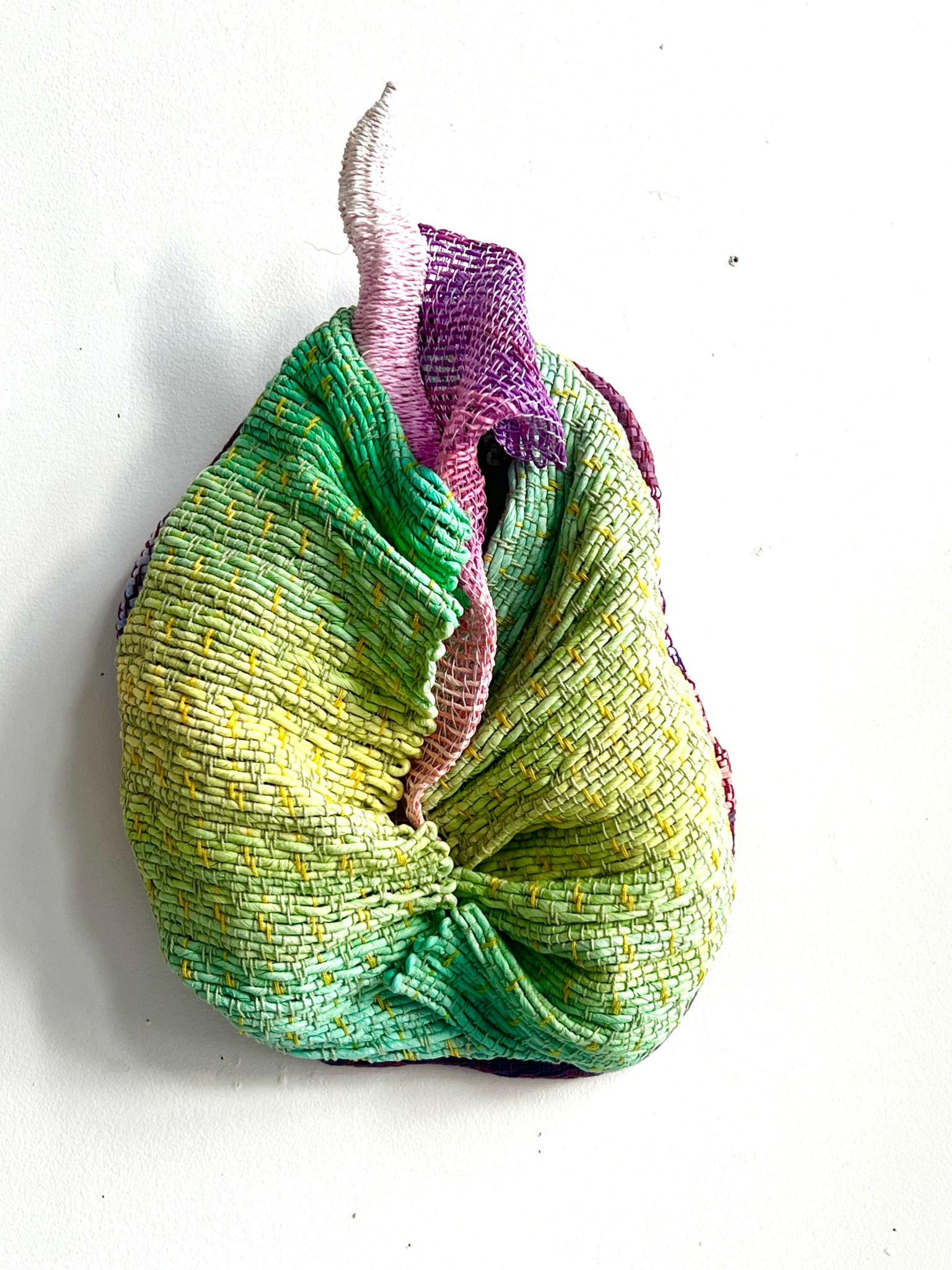
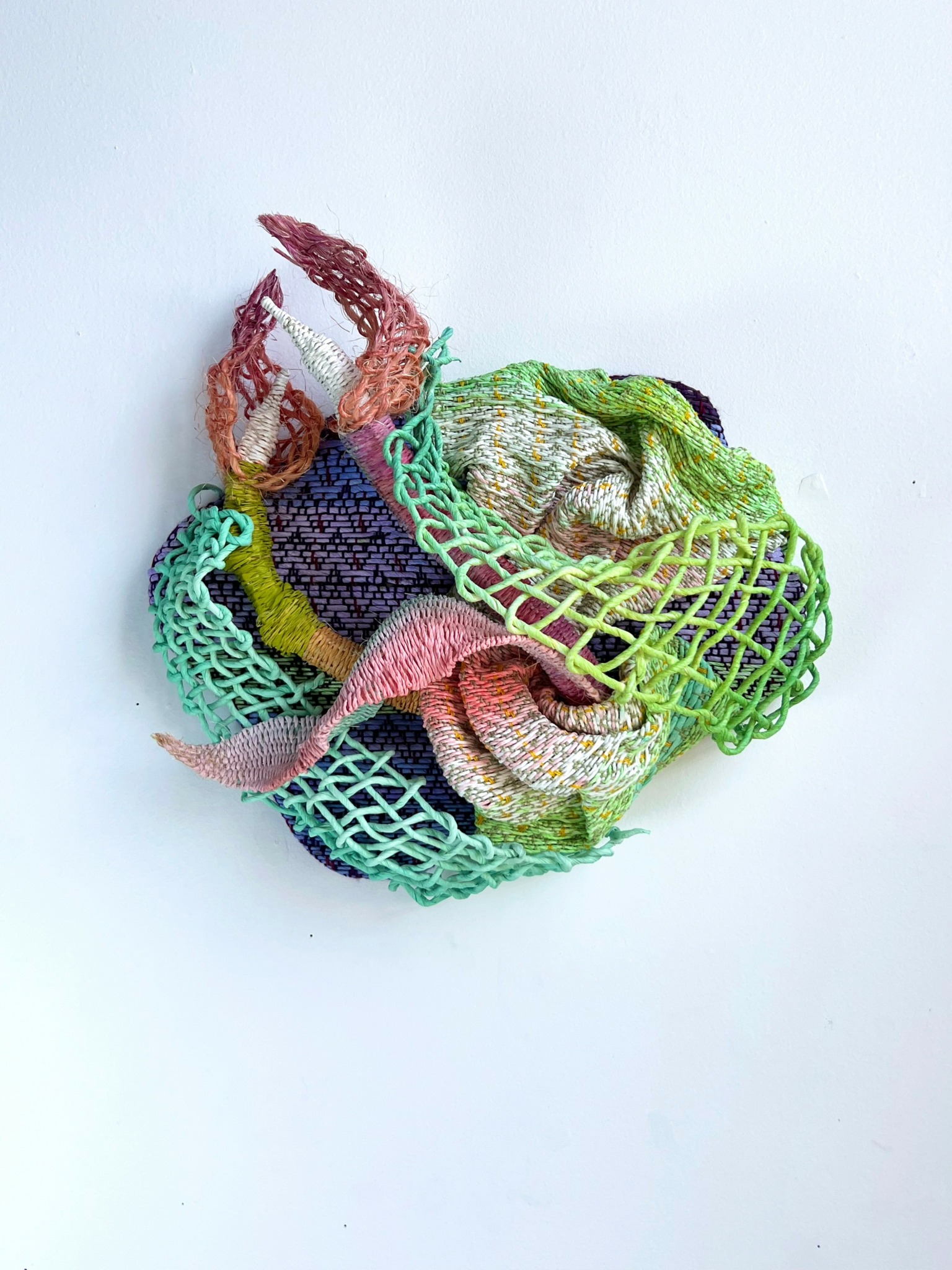
Is there a particular goal or mission driving your creative journey?
Yes. My creative journey is driven by a desire to restore a sense of connection between humans and the natural world. I want my work to invite viewers to slow down and notice the subtle intelligence present in plants—the ways they sense, adapt, and communicate—and to recognize the parallels between their rhythms and our own.
Through the tactile, sensory qualities of woven sculpture—its movement, texture, and color—I hope to create spaces where the boundaries between self and nature begin to soften. My mission is to offer moments of reflection, wonder, and reconnection with the living systems that sustain us. Ultimately, I see my practice as a form of dialogue with the world around me, one that honors the cycles of growth, decay, renewal, and transformation that we are all part of.
Contact Info:
- Website: https://www.kathiehalfin.com
- Instagram: eclectic_body
- Facebook: https://www.facebook.com/kathy.halfin




